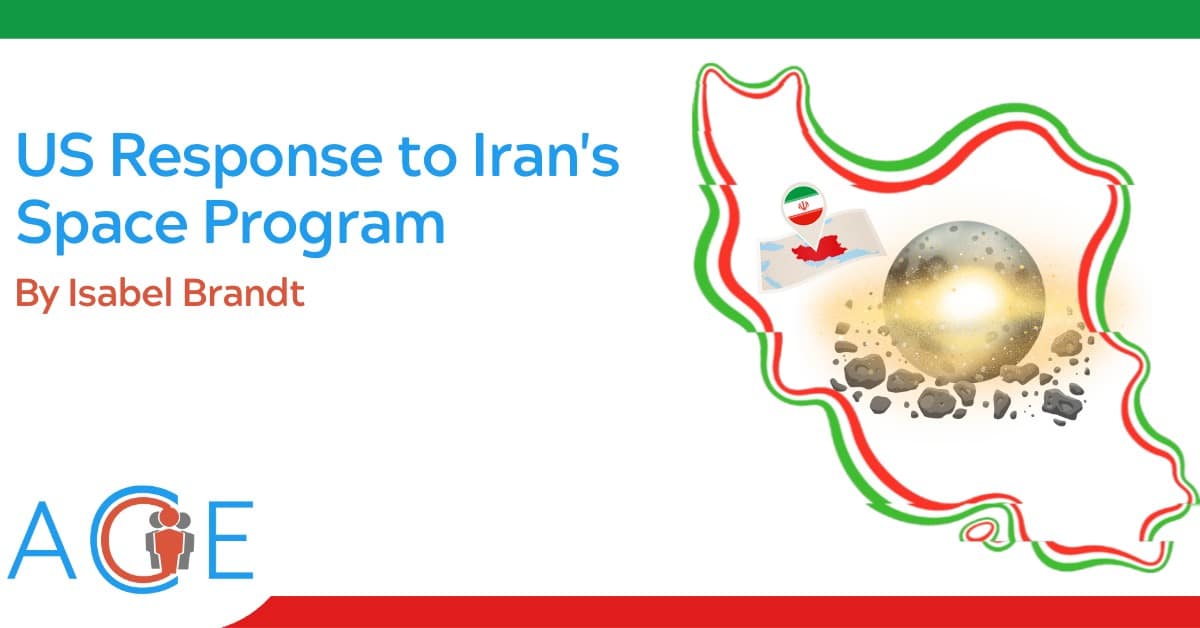Amid US concern over Iran’s nuclear capabilities, the Middle Eastern nation’s space programs have also come under scrutiny. Tehran’s interest in space dates back to 1957, when the country joined the United Nations Committee on Peaceful Uses of Outer Space (COPUOS). Iran’s recent technological achievements have raised concerns about the potential for expanded space development to accelerate the country’s acquisition of a nuclear arsenal.
History of Iran’s Space Program
Since joining COPUOS, Iran has participated in several international discussions regarding Space, including the U.N. Committee on the Peaceful Uses of Outer Space and the 1967 Outer Space Treaty. Iran has maintained a state-run space program, the Iranian Space Agency (ISA), since 2003. The Islamic Revolutionary Guard Corps (IRGC) also runs a separate space program within the country as part of the IRGC Aerospace Force. According to the United States Institute of Peace, the IRGC is more heavily involved than the ISA in the development of solid-fuel rockets, which have the potential to be converted into missiles.
In 1998, Iran showcased its satellite capabilities with the Mesbah satellite program, established through a partnership with the Russian Federation. The Mesbah was intended for civilian image capture but was often speculated to have potential spy satellite features. While the Mesbah was never launched, the agreement marked an early sign of ongoing cooperation between Russia and Iran in space and military technology endeavors.
US-Iran Relations
The relationship between the United States and Iran has been marked by a history of diplomatic struggles. During the Trump administration, tensions escalated when the IRGC was designated as a Foreign Terrorist Organization (FTO). The IRGC has been a state sponsor of Shia terrorist groups in Iraq and Syria, as well as the Lebanese militant group Hezbollah. The Iranian government has also been responsible for numerous cyber attacks on foreign governments and private corporations. Eutelsat, a French satellite operator, reported in October that Iranian state actors had intentionally jammed two of its satellites.
Washington has made clear its intention to prevent Iran from achieving nuclear capabilities. This objective is reflected in the Joint Comprehensive Plan of Action (JCPOA), which was agreed in 2015 by Iran, the EU, and the P5+1 (China, France, Germany, Russia, the United Kingdom, and the United States). The JCPOA includes specific stipulations to prevent the development of Iranian nuclear weapons. In 2018, President Donald Trump withdrew from the JCPOA, but both President Biden and Tehran have publicly supported resuming the deal.
Iran’s space programs have also raised concerns for US officials regarding the dual-use nature of space program technologies and the potential for their application in advancing the nation’s nuclear capabilities. There is a recognized correlation between the growth of space programs and weapons programs. Space technology holds the potential for application in missile development, particularly evident with IRGC solid-fuel rockets and space launch vehicle technologies. These connections played a role in the US-imposed sanctions on Iran in 2019. US intelligence indicates the expansion of Iran’s missile program through rocket launch tests, and the successful 2020 launch of the Noor-1 satellite by the IRGC suggests advancements in Tehran’s ability to develop and deploy missiles.
The US State Department has publicly expressed concern over Iranian rockets and their potential for use in delivering nuclear weapons. Members of Congress have supported Biden’s promise to reenter the JCPOA, but are critical of Biden’s lack of progress on the deal. During a visit to Israel, President Biden committed the US to use “all elements of its national power” to prevent Iran from developing nuclear capabilities. American officials are also worried about Iran’s significant alliances forged via its space programs, notably with Russia and China. Iran provided drones and missiles to Russia during its conflict with Ukraine, and some scholars are concerned about the potential expansion of Russian and Iranian influence into Latin America as well.
Future DevelopmentsIn June 2023, analysts reported that Washington and Tehran are coming to an informal agreement to limit Iranian uranium enrichment to 60%. The level of enrichment needed for a nuclear weapon is 90%. In exchange for a cap on enrichment, Washington will work to unfreeze Iranian assets. Nuclear deal talks have grown stagnant in part due to Russia’s invasion of Ukraine, but analysts speculate that an informal agreement may open the door for further diplomatic talks.

